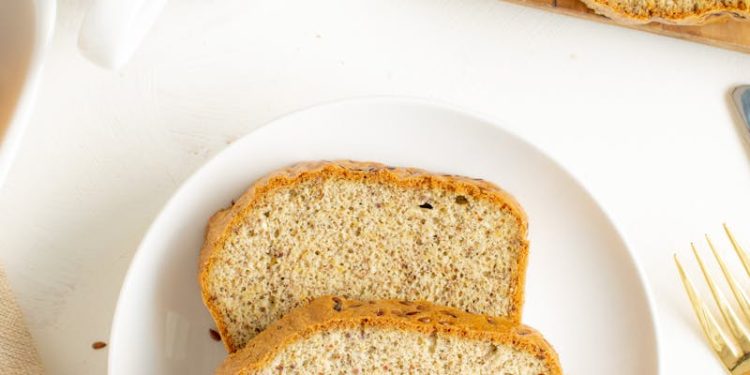Improving your diet doesn’t have to mean drastic changes or giving up your favorite foods. Small, simple swaps can make a big difference in your overall health and support your weight loss journey. By making mindful choices and replacing calorie-dense options with nutrient-rich alternatives, you can enjoy flavorful meals while working toward your goals. Here are ten practical swaps to transform your diet and help you feel your best.
1. Choose Whole Grains Over Refined Grains
Refined grains like white bread, white rice, and pasta are stripped of much of their fiber and nutrients during processing. Whole grains, on the other hand, retain their fiber and offer a host of health benefits. Swap white rice for brown rice, quinoa, or farro, and choose whole-grain bread and pasta instead of their refined counterparts. These options are more filling, help stabilize blood sugar, and support digestive health.
2. Switch Sugary Drinks for Water or Infused Alternatives
Sugary beverages like soda, energy drinks, and even fruit juices are significant sources of empty calories. Replace these with water, herbal teas, or sparkling water infused with fresh fruit for flavor. If you enjoy fruit juice, opt for freshly squeezed or 100% juice and limit your portion size. Staying hydrated with low-calorie drinks also supports metabolism and energy levels.
3. Opt for Greek Yogurt Instead of Regular Yogurt
Regular yogurt, especially flavored varieties, often contains added sugars. Greek yogurt is a protein-packed alternative that keeps you fuller for longer. Choose plain Greek yogurt and add natural sweetness with fresh fruit, honey, or a sprinkle of granola. This swap not only reduces sugar intake but also boosts your protein consumption, which is essential for weight management.
4. Snack on Nuts and Seeds Instead of Chips
Chips and other processed snacks are high in unhealthy fats and sodium. Replace them with a handful of nuts or seeds, such as almonds, walnuts, or sunflower seeds. These options provide healthy fats, protein, and fiber, which curb hunger and prevent overeating. Be mindful of portion sizes, as nuts are calorie-dense.
5. Replace Creamy Salad Dressings with Vinaigrettes
Creamy dressings like ranch or Caesar can add unnecessary calories and saturated fats to your salads. Instead, choose vinaigrettes made with olive oil, vinegar, and herbs. You can also make your own dressing at home, customizing flavors while keeping it light and nutritious.
6. Bake or Air Fry Instead of Frying
Fried foods are often high in unhealthy fats and calories. Opt for baking, grilling, or air frying to achieve similar textures without the excess oil. For example, air-fried potatoes can replace French fries, and baked chicken offers a healthier alternative to fried options. These cooking methods enhance flavor while keeping meals lighter.
7. Use Avocado as a Spread Instead of Butter or Mayo
Butter and mayonnaise are common spreads that add saturated fat and calories to meals. Avocado is a creamy, nutrient-rich alternative that provides healthy monounsaturated fats and vitamins. Use mashed avocado on toast, sandwiches, or as a base for dips to create satisfying, heart-healthy meals.
8. Satisfy Sweet Cravings with Fruit
When you’re craving something sweet, reach for fresh or frozen fruit instead of candy, pastries, or other sugary treats. Berries, apples, and bananas are naturally sweet and packed with fiber, antioxidants, and vitamins. For an indulgent twist, pair fruit with a dollop of Greek yogurt or a drizzle of dark chocolate.
9. Choose Lean Proteins Over Processed Meats
Processed meats like sausages, bacon, and deli meats are often high in saturated fats, sodium, and preservatives. Swap these for lean protein sources such as chicken, turkey, fish, tofu, or legumes. Lean proteins support muscle repair, keep you full, and reduce the risk of chronic diseases associated with processed meats.
10. Substitute Zoodles or Spaghetti Squash for Pasta
Traditional pasta is calorie-dense and low in nutrients. Replacing it with zucchini noodles (zoodles) or spaghetti squash offers a lower-calorie, fiber-rich alternative. These swaps pair well with your favorite sauces and toppings, giving you a satisfying meal without the excess calories.
Additional Tips for Success
Incorporate More Vegetables
Adding more vegetables to your meals increases volume and nutrient density without adding many calories. Start by doubling the vegetables in recipes or incorporating them into dishes like omelets, stir-fries, and casseroles.
Practice Portion Control
Even healthy foods can contribute to weight gain if consumed in excess. Use smaller plates, measure portions, and listen to your hunger and fullness cues to avoid overeating.
Plan Ahead
Meal planning and prepping help you make healthier choices throughout the week. Preparing balanced meals in advance ensures you have nutritious options readily available, reducing the temptation to opt for convenience foods.
Experiment with Herbs and Spices
Enhance the flavor of your meals without adding extra calories by using herbs and spices. From basil and cilantro to turmeric and paprika, these natural seasonings can elevate dishes and make healthy eating more enjoyable.
Stay Consistent
Small, consistent changes are more sustainable than drastic overhauls. By making gradual swaps and sticking to them, you’ll build healthier habits that lead to long-term success.
The Big Picture
These simple swaps demonstrate that improving your diet doesn’t require giving up the foods you love. By making smarter choices and prioritizing nutrient-dense options, you can enjoy flavorful meals while supporting your weight loss goals. Over time, these changes will become second nature, paving the way for a healthier and more balanced lifestyle.










